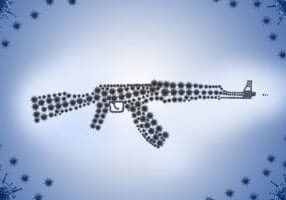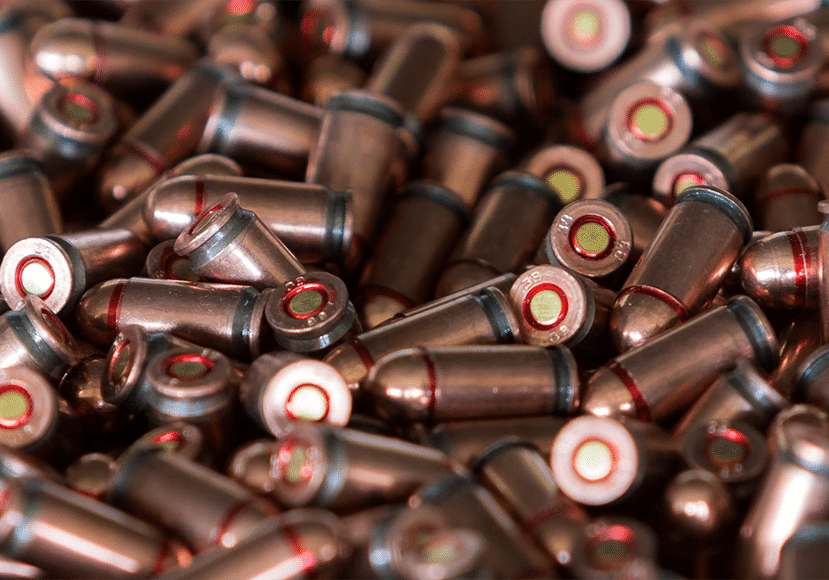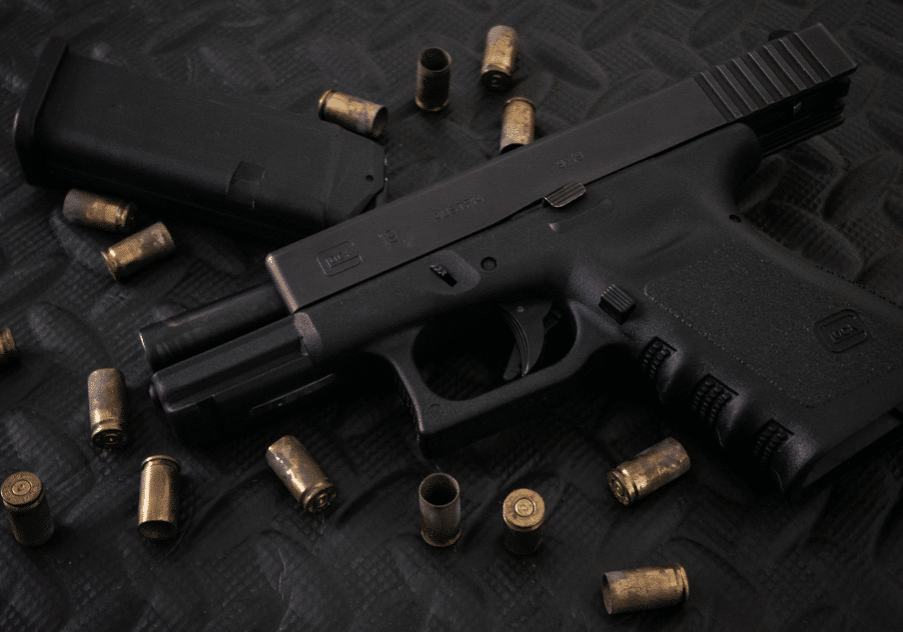Red Dot vs Holographic Sight Comparison | Which is Best?
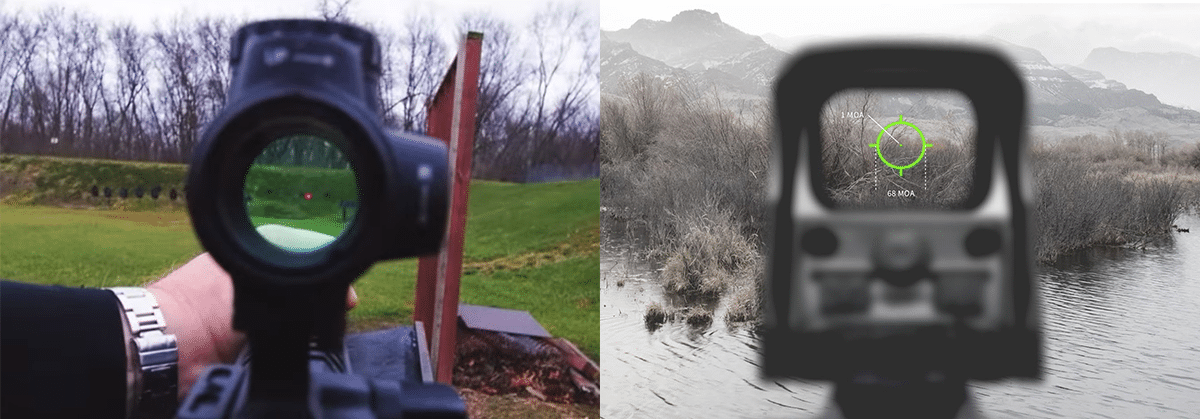
If you’re looking for the best type of optic for your civilian home defense needs (or even many law enforcement needs), you’re likely to boil the decision down to a red dot sight or holographic sight.
In this guide, I’ll breakdown all the key differences between red dot vs holographic sights. By the end of this guide, you’ll know where each type of optic excels, as well as the drawbacks of both types of optics.
Red Dot vs Holographic Sights: Why We’re Comparing These Types of Optics
The reason so many people find themselves comparing holographic sights vs red dots is that they’re actually quite similar.
Both types of optics are primarily designed to be used at close distances, thus neither are magnified. Mounted to a modern sporting rifle, like the AR-15, even novice shooters should easily be able to use them to hit quick center of mass shots up to 50 yards. With practice, these distances can be extended to 100 yards or further.
Holographic and red dot sights both have electronically powered reticles. Usually, they are powered by batteries, though some optics use solar energy as a primary or backup power source. The Holosun HS403C, for example, has a solar array that switches the red dot sight to solar power from battery power when sufficient light is available.

Holosun HS403C
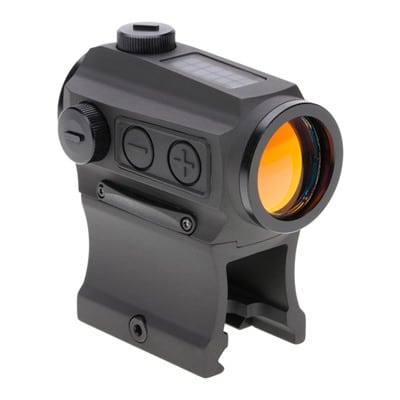
$199.99 at Brownells
Prices accurate at time of publishing
Compared to traditional iron sights that require you to line up a front and rear sight, red dots and holographic sights simply require you to “place your reticle on your target.” This simplification offers faster target acquisition and can make a reasonable level of accuracy easier to achieve.
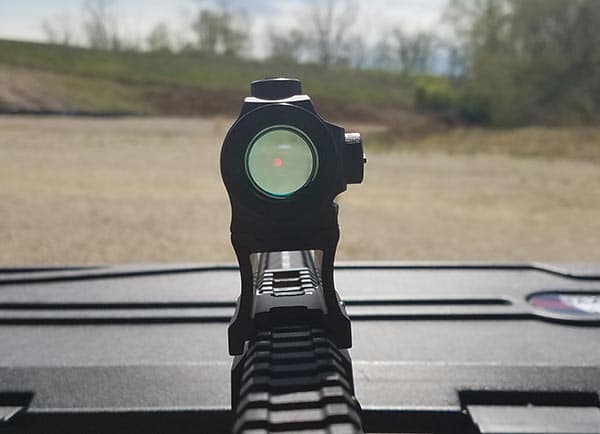
These two electronic optics also offer benefits when compared to magnified optics. They are “parallax free” or essentially have inconsequential parallax. They also essentially have unlimited eye relief. These features offer much greater forgiveness in the distance and alignment of your eye(s) relative to the reticle. You can (and should) keep both eyes open when using red dot and holographic sights, giving you greater situational awareness than iron sight or scopes.
So we’ve established their similarities, but what are the differences between these two types of optics?
Technology
Holographic and red dot sights use different technology to display their reticles.
Honestly, the intricacies of these technologies go a bit over my head and aren’t that important to you as the end-user. Having a fundamental understanding of these technological differences, however, will help you understand why certain features are limited to just one or the other type of optic.
Red dot sights emit an LED beam towards coated front glass. The partially silvered coating reflects the red spectrum, reflecting the red LED back towards your eyes while letting most other light through it.
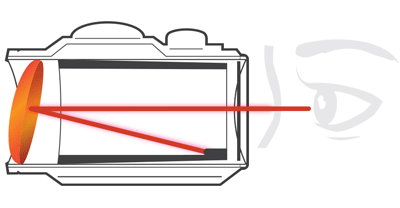
How a Red Dot Sight Works
Rather than LED technology, holographic sights use laser technology. A laser is transmitted from a diode, then reflected off multiple mirrors to send a holographic image to you.
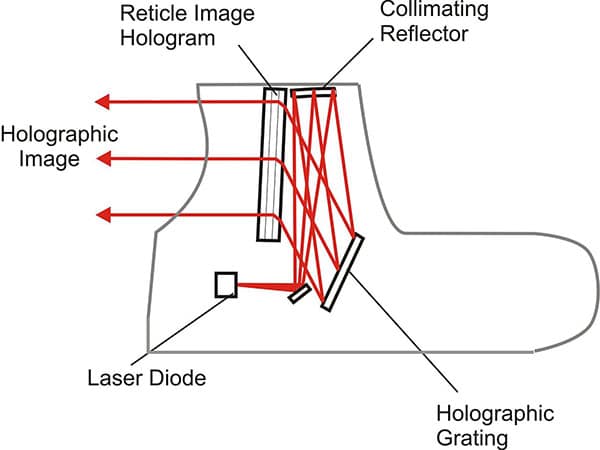
How a Holographic Sight Works
Reticles
The biggest advantage holographic sights offer comes from their reticles.
Eotech is the major player in holographic sights. Their most popular reticle, the HWS, features a red or green 1 MOA dot surrounded by a 68 MOA ring with tick marks at the 3, 6, 9, and 12 o’clock positions.
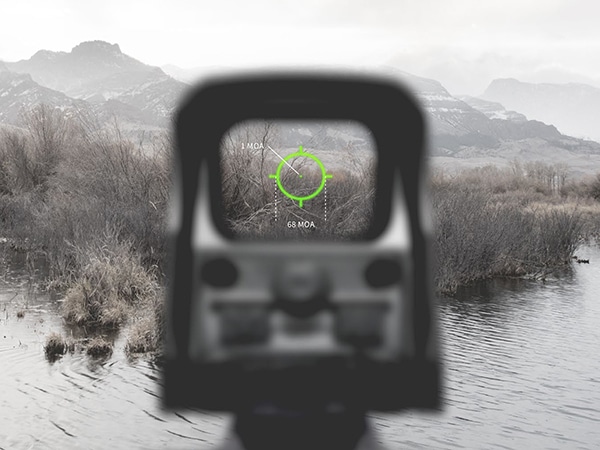
In general, holographic sights usually have more complex reticles. For those of you who play video games, you'll notice that holographic sights often have more complex reticles, like what you might see from a game like Valorant's crosshairs.
By comparison, most red dot sights have a simple 2 MOA dot reticle (or larger) in either red or green.
The HWS reticle can allow for slightly faster target acquisition at a variety of ranges, improve precision, and it helps you make on the fly range estimations.
At close distances, you may feel being able to “put your target in the ring” helps you quickly get on target. Around 15 yards, the ring covers about 65% of an average adult male’s body. Even if you’re not consciously using the ring to aim, instead focusing on the 1 MOA dot, you may find it helps subconsciously as a secondary aiming tool. Others, however, find the ring clutters their sight picture.
As you can see in the picture below, the 68 MOA ring also lets you make quick range estimations if your target is an averaged sized male.

Eotech even offers holographic sights with more complex reticles that further improve your ability to estimate and account for distance.
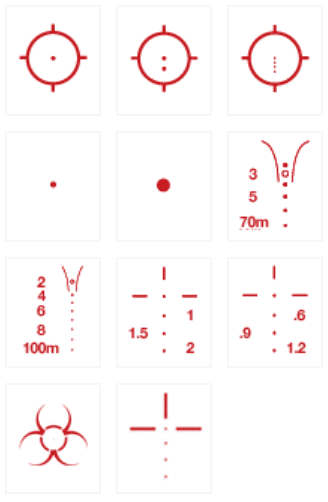
The reticle below, for example, has four 1 MOA dot aiming points for a variety of distances up to 600 yards.
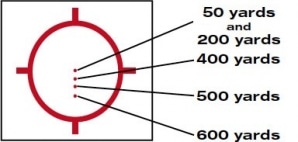
The 1 MOA center dot found on most Eotech reticles, which is smaller than most dots produced by red dot sights, allows for improved precision. At further distances, the dot covers less of your target than a larger one would.
Using Magnification Behind Your Optic

Aimpoint PRO with Vortex 3X Magnifier
If you’re using a magnifier behind your primary optic, you’ll also benefit from the fact that holographic sight’s dots will not be magnified. On the flip side, a dot from a red dot sight will be magnified, likely covering a significant portion of your target.
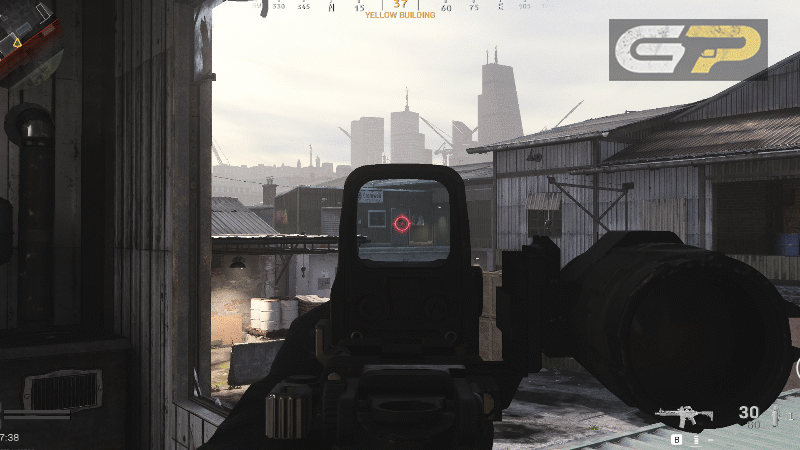
Holographic Sight With Magnifier (Call of Duty: Modern Warfare)
Below, the left image shows what a red dot sight’s reticle will look like magnified 3X compared to the HWS magnified 3X.
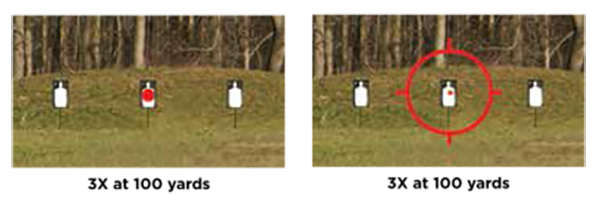
Red Dot Sight vs Holographic Sight Reticle Under 3X Magnification
Battery Life
Holographic sights can produce awesome reticles, but not without using a lot more power than red dot sights.
The laser technology used in real holographic sights limits them to 600-1500 hours of battery life before you must swap in new batteries.
The much lower power consuming LED technology of red dot sights allows even budget-friendly options to have 50,000+ hours of battery life. That’s more than 5 years.
The two budget red dot sights priced under $200 below both have a battery life of 50,000 hours.
Vortex Crossfire GEN II
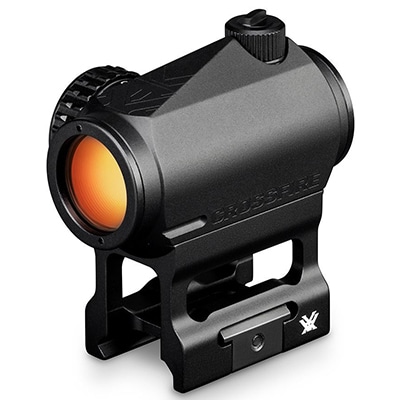
$149.99 at Brownells
Prices accurate at time of publishing
Holosun HS403C

$199.99 at Brownells
Prices accurate at time of publishing
You might be thinking, “Why do I need an optic with more than 1,000 hours of battery life?”
Well, you don’t, but it does have legitimate advantages other than saving on batteries. The battery life of many red dot sights lets you always keep them on. For a home defense gun, you don’t have to worry about remembering to power them on or worry that they’ll be dead when you need them most.
Durability
While you can argue the battery life of red dot sights make them more reliable, you can find super durable options of both types of optics.
Manufacturers like Eotech, Trijicon, and Aimpoint have long made battle-proven optics.
Since you can’t find more budget-mid priced holographic sights, red dot sights may take the cake in this category for you. You can find red dot sights durable enough for most civilian needs under $200.
Size and Weight
The simple technology of red dot sights also allows manufacturers to produce small optics easily. Miniature red dot sights can even fit onto pistols, whereas no real holographic sights exist for handguns.
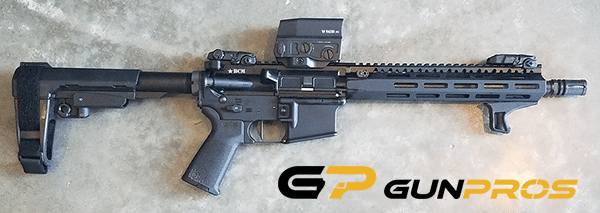
AR-15 Pistol With Vortex Razor AMG UH-1 Holographic Sight
Holographic sights also typically weigh more than red dot sights. The bulky Vortex Razor AMG UH-1 weighs 11.8 oz. My favorite red dot sight for rifles, the Trijicon MRO, only weighs 5.8 oz with a lower 1/3 mount.
Vortex UH-1

$399.99 at Brownells
Prices accurate at time of publishing
Trijicon MRO
$479.99 at Brownells
Prices accurate at time of publishing
This weight difference may sound inconsequential but is worth noting in a modern world of lightweight AR-15s.
Even when comparing the weight increase of the MRO vs the UH-1 on an AR-15 with a fairly standard weight of 6 lbs, adding the MRO increases the weight by ~6% and the UH-1 increases the weight by ~12%.
Price
Eotech and Vortex are the only major manufacturers making real holographic sights. The Vortex UH-1 can sometimes be found for under $400, but Eotech models will usually run $400+. My favorite Eotech, the EXPS2, usually goes for $500+.
Eotech EXPS2
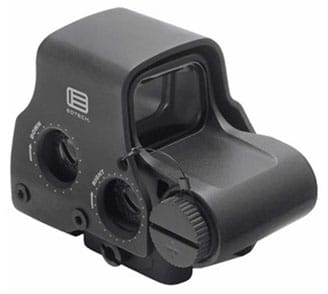
$569.99 at Brownells
Prices accurate at time of publishing
Top of the line red dot sights, like those from Trijicon and Aimpoint, will usually be priced similarly or even higher than Eotech holographic sights. There are, however, budget-friendly options priced as low as $100-$200 from Vortex and Holosun that I’d be confident using for purposes like home defense.
Vision Conditions
If you have astigmatism or another vision condition, you may find that one type of optic works better for you than the other.
Many people with astigmatism find that red dot sight reticles blur more than holographic sights. If you have any vision conditions, your best bet is to try both types of optics.
Keep in mind, focusing your vision on the reticle of either type of optic may make it appear blurry.
Night Vision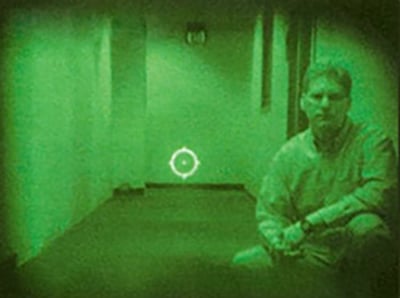
If you happen to be planning to use night vision, not all electronic sights will work with night vision goggles.
Most red dot sights above $100 do have NV brightness settings, but only a limited number of holographic sights are night vision compatible.
The Eotech EXPS2, for example, does not have NV setting, but the EXPS3 is night vision compatible. Vortex does not make a night vision compatible holographic sight.
Red Dot vs Holographic Sights: Which is Best?
There’s no clear-cut answer as to what type of optic is best when comparing holographic sights vs red dots. As is often the case, what’s best for your needs may not be best for mine. You may even want to use both for different applications.
For self-defense needs, the battery life of red dot sights wins out for me. For hunting and tactical applications, you may prefer a holographic sight.
Personally, my favorite optic in either of these categories is the Trijicon MRO. We've also chosen it as the overall best red dot sight.
Trijicon MRO
Product Name: Trijicon MRO
Product Description: The Trijicon MRO is our favorite red dot sight. It's built to the same Mil-Spec standards as the ACOG fixed magnification scope, the most battle-proven optic of all time. Add the fact that it has 50,000 hours of battery life, and you can be sure the MRO will be ready when you need it. The MRO isn't just a workhorse, however. We also think it has the best sight picture of any rifle red dot sight we've used.
-
Sight Picture
(5)
-
Durability
(5)
-
Reliability
(5)
-
Usability
(5)
-
Battery Life
(5)
-
Value
(5)

